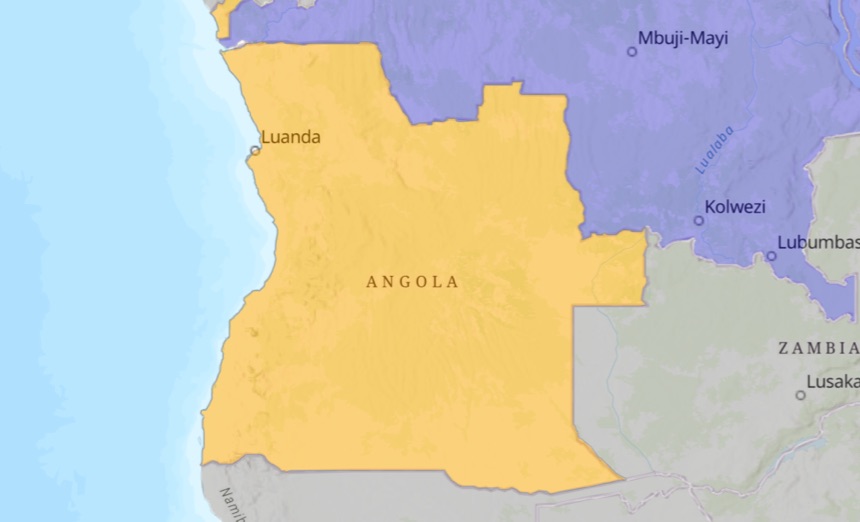After a 27-year civil war, Angola was left with a significant surplus of weapons and ammunition with inadequate and unsafe storage infrastructures, as well as high numbers of minefields across its territory. The country also experiences a significant proliferation of weapons, mostly originating from the civil war period and diversion from national stockpiles, which leads to further insecurity and high rates of weapons trafficking and armed crime.
In terms of weapons and ammunition management, the US Office of Weapons Removal and Abatement (WRA), the Mines Advisory Group (MAG) and the HALO Trust notably work with the Angolan government, police and military to enhance the country’s physical security and stockpile management as well as its weapons and ammunition disposal capacities.
Source: Michael Tirre, “Angola’s Path Forward for Security and Economic Development: Weapons Management and Humanitarian Demining,” US Department of State, Dipnote, August 19, 2019, https://2017-2021.state.gov/angolas-path-forward-for-security-and-economic-development-weapons-management-and-humanitarian-demining/index.html; Adesoji Adeniyi, The Human Cost of Uncontrolled Arms in Africa. Cross-national Research on Seven African Countries, OXFAM Research Reports (Cowley: OXFAM, 2017), https://www-cdn.oxfam.org/s3fs-public/file_attachments/rr-human-cost-uncontrolled-arms-africa-080317-en.pdf; “Polícia angolana reconhece roubo de armas por membros da corporação,” Voice of America, September 1, 2016, https://www.voaportugues.com/a/policia-angolana-roubo-armas/3489796.html; “Weapons and Ammunition Management (WAM) in Africa,” UN Institute for Disarmament Research, Online Update Meeting Summary, 6 May 2020, https://www.unidir.org/sites/default/files/2020-07/Weapons%20and%20Ammunition%20Management%20%28WAM%29%20in%20Africa%20-%20Rapport%20English%20May%202020.pdf.
Launch the country dashboard
Further information
Accidental explosions
Since the Small Arms Survey began collecting data in 1979, five accidental explosions have been reported in Angola.
Table 1. Accidental explosions in Angola (1979–2021)
Year | Location | Owner/manager | Deaths | Injuries |
2003 | Menongue | State (military) | 2 | 15 |
1997 | Luanda | State (military) | 9 | 22 |
1995 | Lubango | State (military) | 0 | 4 |
1994 | Lubango | State (military) | 2 | 32 |
1992 | Luanda | State (military) | N/A | 13 |
Source: “Unplanned Explosions at Munitions Sites (UEMS) Database,” Small Arms Survey, updated December 15, 2021, https://smallarmssurvey.org/database/unplanned-explosions-munitions-sites-uems.
Cases of diversion
Insufficient information on cases of diversion in Angola.
Disposal
To decrease the above-mentioned risks of accidental explosions and diversion, Angola has disposed of its ammunition since 2006.
Table 2. Disposal of tonnes of ammunition in Angola
Year | Tonnes of ammunition |
2021 | N/A |
2020 | 40 |
2019 | 40 |
2018 | 40 |
2017 | 40 |
2016 | 40 |
2015 | 40 |
2014 | 40 |
2013 | 40 |
2012 | 40 |
2011 | 40 |
2010 | 40 |
2009 | 40 |
2008 | 40 |
2007 | 40 |
2006 | 40 |
Source: “United States Government Provides Additional USD 11.1 Million For Humanitarian Demining And Weapons Stockpile Management In Angola,” US Embassy in Angola, Press Release, October 19, 2020, https://ao.usembassy.gov/united-states-government-provides-additional-usd-11-1-million-for-humanitarian-demining-and-weapons-stockpile-management-in-angola/.
Needs
No needs have been reported for Angola.



